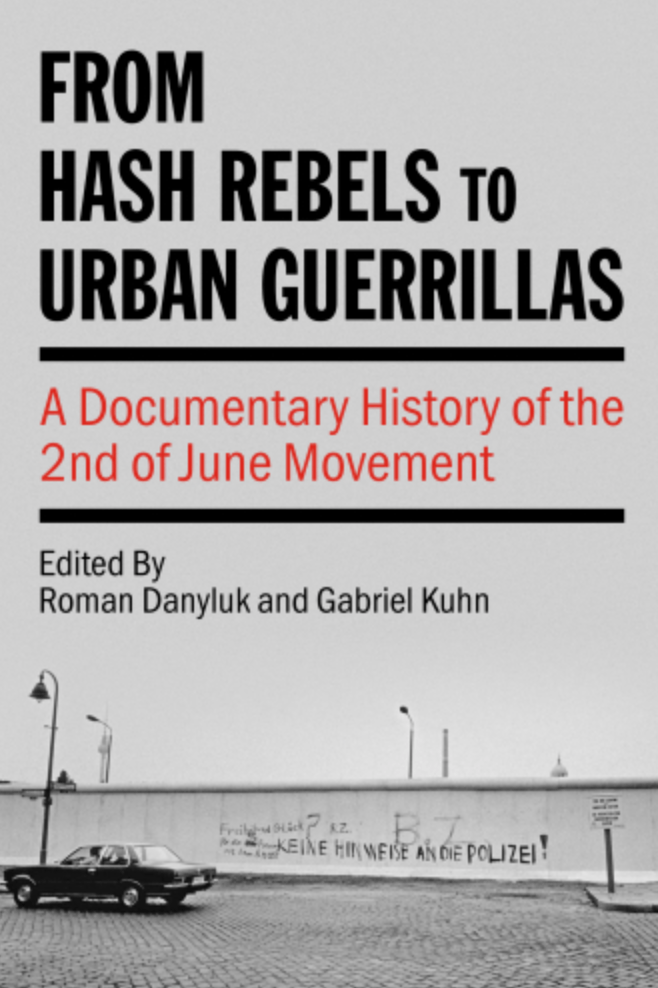The Rebellion of the Hippie Lumpen in Capitalist Berlin

Image by Nick Fewings.
West Berlin—the capitalist side of Berlin during the Cold War, was a city of radical ferment, especially in the 1960s into the 1980s. Groups calling themselves communist mixed with counterculture radicals, anarchists and varying combinations of any and all of the above. One of the best known of these groups called themselves the 2 Juni Bewegung—the 2nd of June Movement. Many of its members had previously been part of a loosely-knit band of provocateurs calling themselves Hasch Rebels. Of course, the Hasch referred to hashish, which was the most common form of cannabis available in Europe at the time. Like the Yippies in the United States, these folks were anti-authoritarian and leftlist, with most of them being from the German working class. Their targets included the police, the court system (which included many former Nazis), the mainstream press and US/West German imperialism, especially as it revealed itself in postwar Germany.
On June 2, 1967, many if not all of the individuals who would became the 2 Juni Bewegung took part in a protest against the Shah of Iran, who was visiting the city of Berlin. The Shah, who was the largest benefactor of US aid in the region we call the Middle East at the time, was gaining world renown for the repressive police state he was building in Iran. The protest turned violent when police working with Iran’s secret police the SAVAK, began to attack the crowd. A young man named Benne Ohnesborg was shot and killed. Hence, the name, 2 Juni Bewegung.
Although it certainly had its detractors, there was a relatively strong current in the western new left that supported and engaged in armed struggle. The reasons for this ranged from the political to the personal; from an impatience with the protest movements to a genuine attempt to create a revolutionary situation. Perhaps the best known of these groups engaged in armed struggle were Italy’s Red Brigades (BR), West Germany’s Red Army Fraktion (RAF) and the Weather Underground Organization (WUO) in the United States. This list does not not include groups from the Black liberation and other third world liberation movements in large part because of their very different relationship to US imperialism. The 2 Juni Bewegung should also be included in this list. The recent publication of From Hash Rebels to Urban Guerrillas: A Documentary History of 2 Juni Bewegung makes this quite clear.
Of the four groups mentioned above, it’s reasonable to state that each of them had their own approach. In other words, each group developed their praxis according to their understanding of what would be most effective for the role they hoped to play. Of course, that understanding was based on the makeup of their membership, their experiences in the greater society, who they were trying to engage and what their short and medium term goals were. For example, the Red Army Fraktion saw itself as part of the worldwide struggle against US imperialism—in league with the aremd fighters in the Vietnamese National Liberation Front and the Palestinian Liberation Organization. On the other hand, Italy’s Red Brigades considered their role to be one of organizing the working class of Italy into a revolutionary force. The Weather Underground, although originating from a desire to organize the white working class youth in the United States into a fighting force behind the Black revolutionary vanguard, ultimately spent most of its most active years acting more in the vein of the RAF, serving as something of a fifth column in support of the Vietnamese and other anti-imperialist/colonial struggles.
The 2 Juni Bewegung formed with the intention of fomenting revolution inside the metropole—the heart of western imperialism. Unlike the RAF and the WUO, it operated both underground and aboveground. This provided it with a consequent level of support among proletarian youth working and otherwise. This dynamic manifested itself in instances such as the distribution of leaflets in West Berlin after the group kidnapped conservative mayoral candidate Peter Lorenz and demanded the release of political prisoners in Germany. After 2 Juni Bewegung members and supporters provided the leaflets to various allies in the Berlin counterculture community, the leaflets were spread throughout the city. When all was said and done, between ten and twenty thousand were passed out, all while the city was locked down while the authorities searched for Lorenz, who was released unharmed after the prisoners had safely arrived in the then socialist country of South Yemen.
The basis of the group’s theory is simple and was one shared by many leftist groups in Europe, North America and elsewhere around the world. Its essence is expressed in this excerpt from a pamphlet written by the left feminist group Rote Zora in 1987: “capitalist accumulation turns all human activities, expressions and material conditions for survival into commodities.” The group’s analysis presciently displays a potential relevance to today, an example of which can be found in the closing statement of member Klaus Viehmann at his trial in 1981 (and reprinted with edits in the magazine Radikal later that year.) After discussing the state of the Left and anarchist movements, the counterculture and the Greens, the place of violence and the expanding police state from the street to the prisons, Viehmann turns his attention to the role of computer technology; “the collection of data,” he writes. “is one side of this dirty coin, and the access to it is the other.”(262) He continues in this vein, predicting the advent of a form of technofascism—where those with the computers can take over the world without leaving their secure facility. .
From Hash Rebels to Urban Guerrillas is a well-curated collection of many of the group’s leaflets, theoretical writings, transcripts of interviews and debates. Like they did with their earlier publication of the Red Army Fraktion’s documentary history, PM Press and Canada’s Kersplebedeb have produced a vibrant and informative text that is simultaneously history, prediction and even a potential source for contemporary organizing. The impeccable translation brings the lively, often impassioned and even humorous content of the originals to the English-speaking reader with all of it intact.

No comments:
Post a Comment